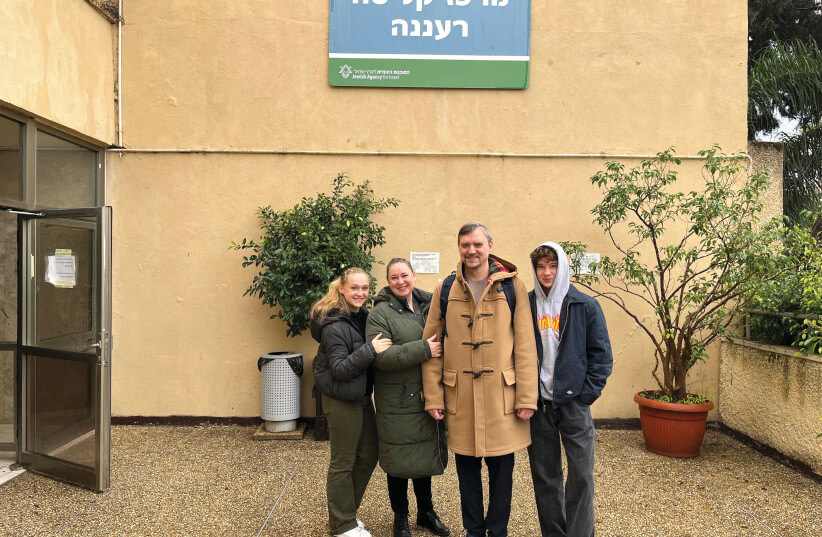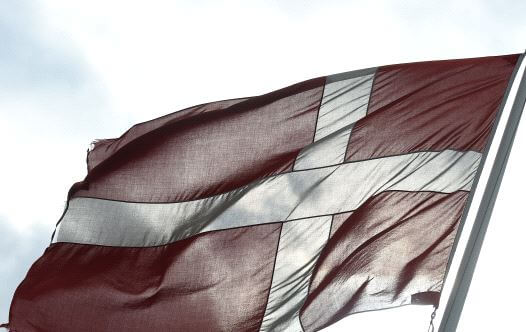Original Article Is Published At The Jerusalem Post
As Benjy celebrates 40 years since his aliyah, he remains positive yet realistic.
When Benjy Munitz’s family moved to a “more Jewish neighborhood” of Los Angeles and joined a synagogue in time for his bar mitzvah, his parents issued an ultimatum.
They said, “You have to go to a [Jewish] youth group once. It is your choice after that whether to continue or not.” The experience was so positive that Benjy kept going, got increasingly more involved in Jewish communal life, made aliyah less than a decade later, and spent his life dedicated to tikkun olam (repairing the world).
Growing up in a Reform temple at that time meant two things: community and tikkun olam. He credits his parents and various rabbis for instilling these values in him.
“My parents boycotted grapes [a labor strike in the late 1960s organized by the Agricultural Workers Organizing Committee against table grape growers to fight against exploitation of farm workers]. And our shul rabbi, Steven Jacobs, was known as ‘The Boat People Rabbi,’ since he felt it was a Jewish obligation to help resettle refugees from Vietnam,” he recalls.
Benjy was “all in” with his involvement in the Reform movement and tikkun olam. He became a leader in NIFTY (National Federation of Temple of Youth) and attended Jewish summer camp Swig in the Santa Cruz mountains, where they had a model kibbutz.

BENJY HARVESTS onions on a tractor at Kibbutz Lotan, 1980s. (credit: Maor family)
In high school, Benjy secured prison uniforms and organized a demonstration outside of NBC in 1978 to spotlight the plight of Soviet Jews; he and fellow protesters wanted the studio to show the state of Soviet Jews and refuseniks during their coverage of the upcoming 1980 Olympics. Benjy also organized a demonstration to bring attention to apartheid in South Africa.
One of the founders of Kibbutz Yahel encouraged Benjy to go to Israel after high school. He spent the year on the Machon l’Madrichei Chutz L’Aretz Jewish Agency Leadership Program, which “led to a very high aliyah rate” among the Reform movement participants.
He credits three experiences from that year in Israel with contributing to his desire to make aliyah: 1) meeting relatives from Argentina from the same shtetl as his family, who came to Israel on aliyah after the Six Day War; 2) in 1979 experiencing a pipe bomb go off a block away from his home in Jerusalem and seeing “how Israel turns from a country into a community, with people caring for each other and helping each other out;” and 3) while living on Kibbutz Yahel, learning about the founding of a new Reform Kibbutz Lotan, in the Arava. (“It checked all the boxes, community, being active and Jewish history and tikun olam.“)
After spending that formative year in Israel, Benjy returned to the US for three years to attempt to get his college degree. He spent just over a year at UCLA before transferring to a junior college. “They had agricultural fields. I learned how to drive a tractor and learned about soil,” he says.
He also was a Zionist youth leader, spoke about Israel on college campuses, and continued the process of preparing to make aliyah, including saying goodbye to family, which he stresses is “an important part of the process. “
Making aliyah and moving to Israel
IN OCTOBER 1983, Benjy made aliyah to Kibbutz Lotan, six months after its founding. “I was gung-ho about the kibbutz, since it brought together several of the ideologies I believed in, and it had a great group of young and very talented people,” he explains.
After a year and a half in Israel, he and other olim (new immigrants) from the kibbutz enlisted in the army together. “Wearing an army uniform on a bus was the first time I felt really Israeli – until I opened my mouth [to speak Hebrew]!” Benjy playfully adds that he learned a great deal in the army, including “all about Hebrew initials and the best places around the country to get food.” He was flattered when offered to become an IDF officer, but he felt that “making the desert green was my contribution” and focused his energies on his kibbutz work.
In addition to being in charge of field crops such as melons, tomatoes, and onions, and later serving as general secretary of the kibbutz, he met his future wife, Nicole (Nicky), who arrived on the kibbutz from the suburbs of Sydney, Australia, a few years after Benjy arrived.
“Meeting Nicky was the best thing that happened to me on kibbutz,” reports Benjy, who changed his last name to Maor after getting married in December 1992. They combined the M from Munitz’s name, and the R from Nicky’s last name (Center) and came up with Maor.
Nicky has worked as a lawyer for the Israel Religious Action Center of the Reform Movement (IRAC) since 1992. In 1996, she became director of IRAC’s Legal Center for Olim, which has represented more than 100,000 new immigrants, particularly regarding issues relating to the Interior Ministry and conversion. She has spearheaded conversion cases before the Supreme Court and recently won the landmark decision recognizing Reform and Conservative conversions performed in Israel.
DESPITE BENJY’S professional successes and his fluency in Hebrew, he began to realize that he still had some language gaps, especially given his work in the area of Jewish identity. When colleagues at Oranim College of Education realized he was American-born and therefore fluent in English, they asked him to help with fundraising.
Benjy’s fundraising role was eye-opening and career-altering. “You can do tikkun olam through fundraising. You help bridge the gap between doing partners and fundraising partners,” he says.
Benjy has since spent almost his entire professional career in the Israel fundraising sphere, always combining his love for the fundraising and tikkun olam. He’s worked for Hamidrasha Center for Study and Fellowship (educational programs for new immigrants from the Former Soviet Union) and TAKAM (the United Kibbutz Movement), establishing the first secular yeshiva in Israel, and running programs for Russian and Ethiopian immigrants.
In recent years, he’s also spent time as director of global resource development at Beit Issie Shapiro, a Ra’anana-based leader in the disability field, as well as fundraising at the Leo Baeck Education Center, Hillel Israel, and at his current position, Tsad Kadima (A Step Forward), a program for people with cerebral palsy that operates in six cities in Israel.
As Benjy celebrates 40 years since his aliyah, he remains positive yet realistic. “On October 6, now 40 years ago, I packed my bags, got on a plane, and made aliyah. If you are not happy day to day, it will never stick.” Benjy is generally very happy with his decisions and with life in Israel.
“After 40 years, I want to be optimistic about how Israel has changed for the better, though sometimes it is hard to see the positives.” He jokes, “I can’t say ‘Ein li eretz acheret (I don’t have another country),” noting that he has two passports, and his children each have three.
He is proud of his three children, Sagi, Eden, and Tamar. All serve in the IDF, and two sons returned from overseas for the recent IDF call-up. Benjy adds, “I was young and idealistic when I made aliyah; now I am a little older and still idealistic!”
However, he cautions that anyone considering making aliyah should be aware of just how hard it is to leave family behind. “What I miss most about LA is Mexican food and my family. The family piece starts off difficult, then gets worse. Having family halfway around world – both Nicky and I – made us jealous of olim from the UK (with family closer by).
“You don’t think of the ages of your parents (now and in the future) when you make aliyah at 23. Everything has a price,” he says.
But ultimately, “you feel alive here!” ■
Benjy Maor, 62 From Los Angeles






